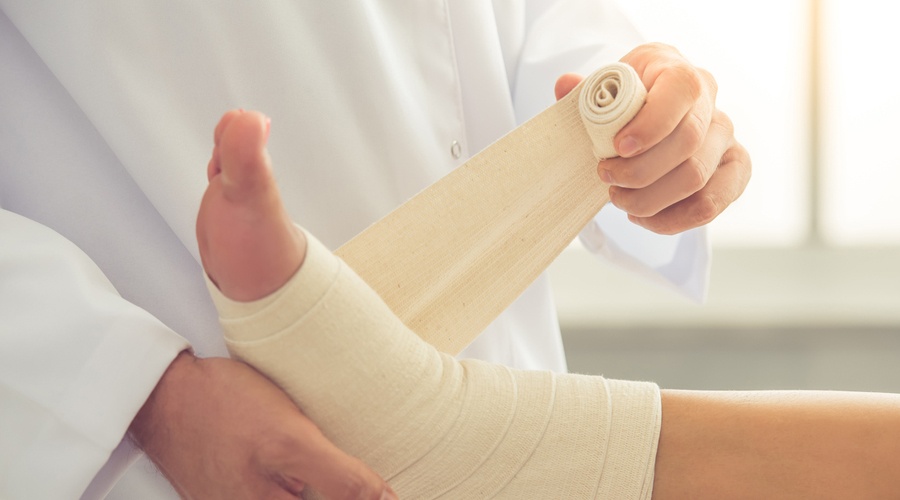For decades, avascular necrosis (AVN) of the femoral head was regarded as a degenerative...
Tips for Diabetic Wound Care

Diabetic foot ulcers are non-healing wounds that develop on the bottom or side of a person’s foot, and are common side effects among those with diabetes. These are serious lesions that could become infected and result in amputation if not cared for properly. Preventing and healing these severe wounds is possible. The first step is to pay close attention to the condition of your feet on a daily basis, taking note of any signs of redness, irritation, swelling and/or sensitivity. If you do recognize such symptoms, it’s best to consult with a trusted health care provider for an assessment and treatment.
Once diagnosed, there are certain diabetic wound care tips to consider while embarking on your journey to recovery. These include:
1. Be Proactive with Your Overall Health
It is important to take the necessary steps to optimize your overall health. For example, people with diabetes should pay careful attention to their blood glucose levels and nutritional status. This is important even if they aren’t suffering from lower extremity wounds. However, those who are dealing with foot ulcers should keep a particularly close eye on these levels, as this can affect the healing process.
The nonprofit, American Diabetes Association, stresses the benefits of maintaining “tight control” over your diabetes, which involves measuring your blood glucose levels more frequently, and reevaluating your insulin dosage and schedule.
2. Make a Care Plan with Your Doctor
Depending on the extent of the wound, your health care team may recommend several different treatment modalities. These may include: supportive footwear to reduce pressure at the wound site, routine dressing changes to keep the area clean, scheduled visits to remove any dead tissue, and antibiotics if there is an underlying infection.
3. Watch for Signs of Regression
Monitor your progress regularly in order to catch any symptoms indicating your condition is declining. As aforementioned, be sure to check if your foot is extremely red or aggravated in any way, sensitive to touch, and/or unable to withstand pressure. If you notice that your condition isn’t improving, consult with your healthcare provider and update him or her on your symptoms.
4. Consider Hyperbaric Oxygen Therapy
Hyperbaric oxygen therapy, also called HBOT, is an all-natural technique approved by the U.S. Food and Drug Administration (FDA) to facilitate the healing of diabetic foot ulcers. The high atmospheric pressure and increased oxygen concentration in a hyperbaric chamber increases the amount of oxygen in the bloodstream. This increased oxygenation stimulates new blood vessel creation, promotes circulation to the damaged tissue, decreases inflammation, and helps to fight off infections.
All of these targeted effects are important in the healing process and can help promote wound healing, as well as prevent further complications.
{Updated: February 21, 2019}

Written by Alan Katz, MD, FUHM, FACEP, FAAEM
Dr. Alan Katz, National Medical Director of Hyperbaric Medical Solutions (HMS), is double board certified in Emergency Medicine and Hyperbaric Medicine. He directs clinical operations, education and research initiatives, and the integration of other regenerative medicine therapies....
Read More



